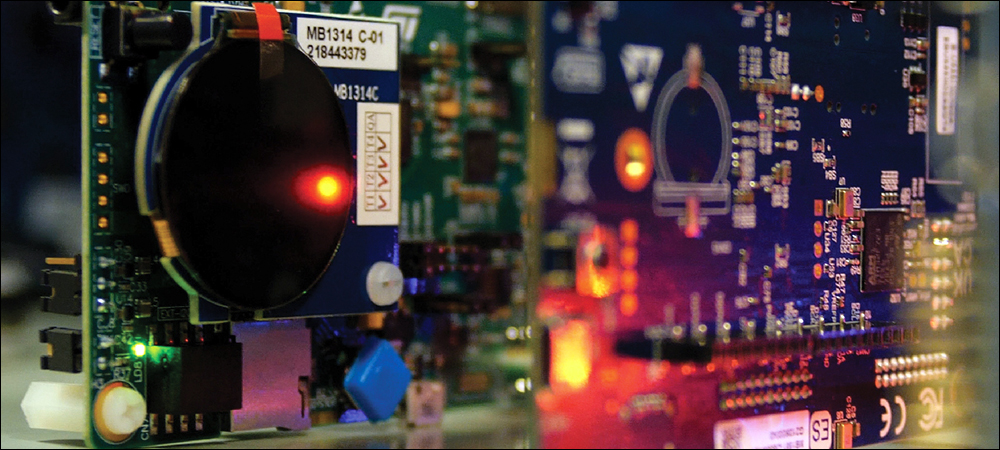RFID Journal LIVE! 2023 will feature end-user companies discussing RFID’s use in various industries, as well as exhibitors offering tagging solutions for multiple applications. To learn more, visit the event’s website.
- Lululemon Selects Nedap RFID Tech for Product Availability
- Nordic Semiconductor Offers IC, Development Kit for IoT
- STMicroelectronics Unveils AI Developer Cloud, BLE SoCs
- Cybertrust, Quantinuum Platform Secures IoT Devices
- Murata Demos Small RFID Tag, Batteries for Healthcare
- Wiliot, ABI Research to Discuss Ambient IoT in Barcelona
Presented here are recent news announcements in the radio frequency identification and Internet of Things industries.
Lululemon Selects Nedap RFID Tech for Product Availability
Lululemon has selected Nedap, a provider of radio frequency identification (RFID) solutions, to deploy its iD Cloud platform, which is expected to improve the guest experience at more than 600 stores by optimizing product availability. The platform is designed to provide real-time inventory data, enabling brick-and-mortar stores to have the right products available on their floors, with digital engagement.
 In August 2022, Lululemon deployed the iD Cloud solution at its stores throughout North America. The project was completed in September of last year, when all of the store locations went live with the technology. The retailer now plans to scale up the RFID-based inventory-management platform this year to its stores in the Europe, Middle East, Africa and Asia Pacific regions.
In August 2022, Lululemon deployed the iD Cloud solution at its stores throughout North America. The project was completed in September of last year, when all of the store locations went live with the technology. The retailer now plans to scale up the RFID-based inventory-management platform this year to its stores in the Europe, Middle East, Africa and Asia Pacific regions.
“Our guests are at the center of everything that we do, and we are hyper-focused on creating strong guest connections through seamless store and online experiences” said Carl Barker, Lululemon’s VP of global omni programs, in a prepared statement. “With Nedap’s iD Cloud solution, we can leverage real-time, accurate data to enable our in-store educators to spend even more time engaging and connecting with our guests. Having a fully mobile cloud solution in our stores greatly contributes to this experience. Online, RFID continues to elevate our digital experience, offering accurate real-time store inventory visibility and powering key fulfillment experiences such as buy online, pickup in store (BOPIS).”
Ailen Bilharz, Nedap’s iD Cloud platform director for North America, added in the statement: “Retail is habitually met with an ever-evolving environment, and Lululemon thrives from a position of strength by staying true to their vision and values on serving their guests and alike across the globe. As highly advanced RFID users, Lululemon’s adoption of the iD Cloud platform commences the next phase in their RFID journey. With Nedap’s scalable real-time solution, Lululemon will continue to meet demand and supply across all channels while elevating the digital and physical guest experience.”
Nordic Semiconductor Offers IC, Development Kit for IoT
Nordic Semiconductor has announced the availability of its nRF7002 Wi-Fi 6 companion integrated circuit (IC) and associated nRF7002 Development Kit (DK). The IC is the first in Nordic’s Wi-Fi product family, and it provides dual band connectivity (2.4 and 5 GHz). Example applications for the nRF7002 DK are included with Nordic’s nRF Connect software development kit. The IC and the DK are both available now from the company’s distribution partners.
The nRF7002 IC can be used with Nordic’s nRF52 and nRF53 Series multiprotocol systems-on-chip (SoCs) and nRF9160 cellular IoT (LTE-M/NB-IoT) system-in-package (SiP), as well as in conjunction with non-Nordic host devices. The DK allows developers to get started on nRF7002-based IoT projects. Wi-Fi 6 benefits IoT applications such as smart-home products, industrial sensors, asset trackers and wearables, the company reports, by providing power efficiency gains for battery-powered Wi-Fi operation, as well as the management of large IoT networks comprising hundreds of devices.
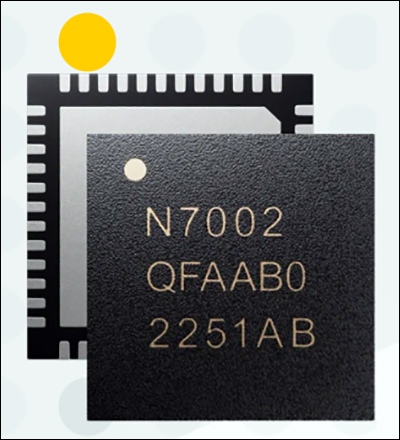 “The nRF7002 Wi-Fi 6 companion IC is a testament to Nordic Semiconductor’s leadership in low-power wireless technology,” said Svein-Egil Nielsen, Nordic’s CTO and EVP of R&D and strategy, in a prepared statement. “This highly integrated and flexible solution will empower developers to create new, innovative Wi-Fi 6-enabled products… I believe it has never been easier to develop great Wi-Fi products.”
“The nRF7002 Wi-Fi 6 companion IC is a testament to Nordic Semiconductor’s leadership in low-power wireless technology,” said Svein-Egil Nielsen, Nordic’s CTO and EVP of R&D and strategy, in a prepared statement. “This highly integrated and flexible solution will empower developers to create new, innovative Wi-Fi 6-enabled products… I believe it has never been easier to develop great Wi-Fi products.”
Finn Boetius, a Nordic product marketing engineer, added in the statement: “The nRF7002 is designed to work alongside Nordic’s nRF52 and nRF53 series, making it a perfect fit for Matter, a smart-home standard backed by Amazon, Apple, Google, Nordic, Samsung and hundreds of other companies. The introduction of the IC and the nRF7002 DK now makes it easy for developers to get started on Matter and any other Wi-Fi based applications.”
Matter uses Thread and Wi-Fi for data transport, and Bluetooth Low Energy (BLE) for commissioning. The dual-band IC complies with Station, Soft Access Point and Wi-Fi Direct operation, and it meets the IEEE 802.11b/a/g/n (Wi-Fi 4), ac (Wi-Fi 5) and ax (Wi-Fi 6) standards. It can coexist with BLE, Thread and Zigbee, and it supports Target Wake Time, a key Wi-Fi 6 power-saving feature. Interfacing with a host processor is accomplished via a serial peripheral interface or Quad SPI. The IC offers a single spatial stream, 20 MHz of channel bandwidth, 64 QAM, OFDMA, up to 86 Mbps of PHY throughput and BSS coloring.
According to the company, the nRF7002 is suitable for implementing low-power SSID-based Wi-Fi locationing when used with Nordic’s nRF9160 SiP and nRF Cloud Location Services. SSID-based Wi-Fi locationing supplements GNSS- or cell-based locationing by providing accurate positioning indoors and in places with a high density of Wi-Fi access points. The introduction of the nRF7002 is accompanied by the launch of the nRF7002 development kit for the Wi-Fi 6 companion IC.
The DK includes an nRF7002 IC and features an nRF5340 multiprotocol SoC as a host processor for the nRF7002. The nRF5340 embeds a 128 MHz Arm Cortex-M33 application processor and a 64 MHz network processor. The DK supports the development of low-power Wi-Fi applications and enables Wi-Fi 6 features like OFDMA, beamforming and TWT. The DK includes Arduino connectors, programmable buttons, a Wi-Fi dual-band antenna, a BLE antenna and current measurement pins.
STMicroelectronics Unveils AI Developer Cloud, BLE SoCs
STMicroelectronics is expanding its solutions for embedded artificial intelligence (AI) developers and data scientists with a set of tools and services intended to get edge AI technology on the market faster and with less complexity by aiding hardware and software decision-making. The STM32Cube.AI Developer Cloud, according to the company, opens access to a suite of online development tools built around the STM32 family of microcontrollers (MCUs). The tool is freely available to registered MyST users and has been undergoing testing and evaluation by embedded development customers.
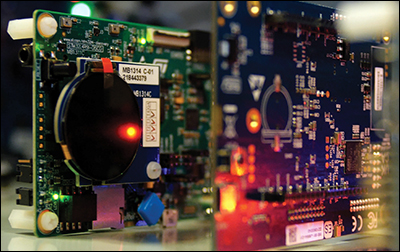 “Our goal is to deliver the best hardware, software, and services to meet the challenges faced by embedded developers and data scientists so that they can develop their edge AI application faster and with less hassle,” said Ricardo De Sa Earp, the executive VP of STMicroelectronics’ General-Purpose Microcontroller Sub-Group, in a prepared statement. “Today, we are unveiling the world’s first MCU AI Developer Cloud, which works hand-in-glove with our STM32Cube.AI ecosystem. This new tool brings the possibility to remotely benchmark models on STM32 hardware through the cloud to save on workload and cost.”
“Our goal is to deliver the best hardware, software, and services to meet the challenges faced by embedded developers and data scientists so that they can develop their edge AI application faster and with less hassle,” said Ricardo De Sa Earp, the executive VP of STMicroelectronics’ General-Purpose Microcontroller Sub-Group, in a prepared statement. “Today, we are unveiling the world’s first MCU AI Developer Cloud, which works hand-in-glove with our STM32Cube.AI ecosystem. This new tool brings the possibility to remotely benchmark models on STM32 hardware through the cloud to save on workload and cost.”
Intended to meet the growing demand for edge AI-based systems, the STM32Cube.AI desktop front-end includes resources for developers to validate and generate optimized STM32 AI libraries from trained neural networks. The STM32Cube.AI Developer Cloud, an online version of the tool, provides an online interface to generate optimized C-code for STM32 microcontrollers, without requiring prior software installation. Data scientists and developers can utilize the STM32Cube.AI’s neural network optimization performance to develop edge-AI projects.
The system provides access to the STM32 model zoo, a repository of trainable deep-learning models and demos to speed application development. Use cases include human motion sensing for activity recognition and tracking, computer vision for image classification or object detection, audio event detection for audio classification and more. Hosted on GitHub, these enable the automatic generation of “getting started” packages optimized for STM32.
Users can access the company’s online benchmarking service for edge-AI neural networks on STM32 boards. The cloud-accessible board farm features a range of STM32 boards, refreshed regularly, allowing data scientists and developers to remotely measure the actual performance of optimized models.
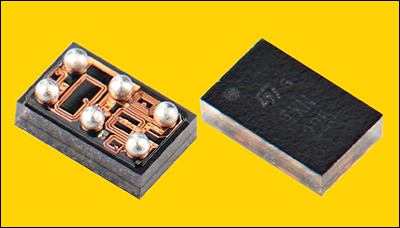 In addition, STMicroelectronics has expanded its range of single-chip antenna-matching ICs designed to simplify RF circuit design, with two new devices for BlueNRG-LPS SoCs and STM32WB1x and STM32WB5x wireless microcontrollers. The MLPF-NRG-01D3 for BlueNRG-LPS and MLPF-WB-02D3 for STM32WB integrate the filtering and impedance-matching network required for RF output power and receiver sensitivity with an external antenna. Each has 50Ω nominal impedance on the antenna side. The chip-scale package has a minuscule footprint, according to the company, as well as a 0.4-millimeter bump pitch and a profile of 630µm after reflow soldering.
In addition, STMicroelectronics has expanded its range of single-chip antenna-matching ICs designed to simplify RF circuit design, with two new devices for BlueNRG-LPS SoCs and STM32WB1x and STM32WB5x wireless microcontrollers. The MLPF-NRG-01D3 for BlueNRG-LPS and MLPF-WB-02D3 for STM32WB integrate the filtering and impedance-matching network required for RF output power and receiver sensitivity with an external antenna. Each has 50Ω nominal impedance on the antenna side. The chip-scale package has a minuscule footprint, according to the company, as well as a 0.4-millimeter bump pitch and a profile of 630µm after reflow soldering.
With a 2.4 GHz low-pass filter, the antenna-matching ICs are designed to facilitate compliance with worldwide radio regulations, including the FCC, ETSI and ARIB specifications. The circuit elements are fabricated on a glass substrate leveraging ST’s integrated passive device (IPD) technology, minimizing insertion loss. Integration on the same die ensures consistent component parameters for end-product quality, ST indicates, and the IPDs help users accelerate time-to-market, reduce bill-of-materials costs and miniaturize circuit dimensions.
The BlueNRG-LP and BlueNRG-LPS SoCs, as well as the STM32WB1x and STM32WB5x, each contain ST’s 2.4 GHz radio IP and come with royalty-free protocol stacks and dedicated software tools. Developers can quickly design wireless products without having extensive RF design skills. On-chip features include memory, peripherals, communication interfaces, power regulation and hardware security, including encryption, memory protection and Public Key Acceleration.
BlueNRG-LPx SoCs can be used in standalone or network processor applications, and they support BLE 5.3 features, including point-to-point and mesh communications, advertising extensions and direction finding. The MLPF-NRG-01D3 IPD is compatible with all variants, comprising the BLUENRG-3x5Vx, BLUENRG-3x5Ax, and BLUENRG-332xx in UFQFPN and WLCSP packages.
The STM32WB5x and STM32WB1x MCUs are certified for Bluetooth 5.3, Zigbee 3.0 and OpenThread, and they feature an Arm Cortex-M4 core for application processing with a Cortex-M0+ dedicated to managing the radio. They are available in WLCSP and UFBGA packages that connect directly to the MLPF-WB-02D3 IPD. A different IPD is available for other MCU variants in UQFN and VQFN packages. The MLPF-NRG-01D3 and MLPF-WB-02D3 single-chip antenna-matching ICs are in production now and are available from $0.14 each for orders of 1,000 pieces.
Cybertrust, Quantinuum Platform Secures IoT Devices
Quantinuum, an integrated quantum computing company, has announced that Cybertrust, a Japanese certificate authority, has integrated its Quantum Origin quantum-computing-hardened private keys into a certificate issuance and distribution platform for IoT devices to ensure secure communications. Cybertrust’s authentication infrastructure for high-speed, high-volume certificate issuance and distribution for large volumes of IoT devices includes the NIST-selected post-quantum cryptography algorithms.
 “Integrating Quantum Origin assures our customers that they can build innovative IoT-based solutions on a platform they can trust to deliver speed and higher security, including post-quantum algorithms support,” said Yasutoshi Magara, Cybertrust Japan’s president and CEO, in a prepared statement. “As a result, customers and partners can use and sell our certification services securely for the long term. We would like to promote activities aimed at realizing a safe and secure society together with Quantinuum.”
“Integrating Quantum Origin assures our customers that they can build innovative IoT-based solutions on a platform they can trust to deliver speed and higher security, including post-quantum algorithms support,” said Yasutoshi Magara, Cybertrust Japan’s president and CEO, in a prepared statement. “As a result, customers and partners can use and sell our certification services securely for the long term. We would like to promote activities aimed at realizing a safe and secure society together with Quantinuum.”
IoT devices typically use certificates to authenticate their connection to other devices or networks to prove they are trusted. The challenge when providing and managing certificates across these devices is complex, the companies explain, due to the volume of devices trying to connect to networks and the need to provide fast data access. Security measures thus need to be robust, while enabling real-time communications.
“Cybertrust Japan and Quantinuum have shown that an advanced quantum-computing-based solution like Quantum Origin can be seamlessly integrated into authentication infrastructure to strengthen key and certificate generation,” added Duncan Jones, Quantinuum’s head of cybersecurity, in the statement. “Cybertrust Japan is the first certification provider in the world to support quantum-computing-hardened keys using Quantum Origin. As the use of IoT devices grows, companies must ensure that their devices have state-of-the-art protection against increasingly sophisticated cyberattacks that threaten their most valuable assets and data.”
Cybertrust’s Secure IoT Platform protects end devices throughout a product’s lifecycle, from semiconductor design to implementation to disposal. The platform creates security certificates for manufacturing in order to protect hardware, make the manufacturing process traceable and provide a long-term defect warranty. The product includes a management platform for devices, allowing secure OS and software updates in addition to securing the data created and transmitted by the devices.
Murata Demos Small RFID Tag, Batteries for Healthcare
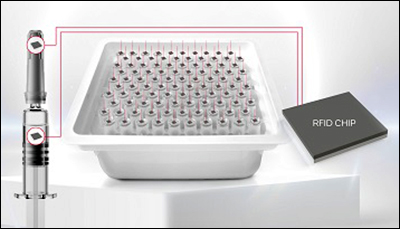 Murata Manufacturing recently showcased its RAIN RFID Tag, along with its HIGH-Drain silver-oxide and mini alkaline batteries for smart healthcare applications. The tag, designed to provide a unique identifier, enables RFID readers to determine an item’s identity and authenticity in smart healthcare applications. The tag can be fitted to metallic and non-metallic surfaces, and Murata says it’s suitable for use on small items. To avoid contamination risk during drug-filling operations, the tag can be embedded into a product, such as a pre-filled syringe, a vial or a cartridge.
Murata Manufacturing recently showcased its RAIN RFID Tag, along with its HIGH-Drain silver-oxide and mini alkaline batteries for smart healthcare applications. The tag, designed to provide a unique identifier, enables RFID readers to determine an item’s identity and authenticity in smart healthcare applications. The tag can be fitted to metallic and non-metallic surfaces, and Murata says it’s suitable for use on small items. To avoid contamination risk during drug-filling operations, the tag can be embedded into a product, such as a pre-filled syringe, a vial or a cartridge.
Murata says it incorporated an antenna in multilayer ceramic substrates to produce a small tag capable of automatic identification and bulk reading of more than 400 units per minute. This allows real-time identification at full production speeds, the company notes, preventing mix-ups during drug-filling operations. The tags also provide item-level serialization, thus limiting batch segregation should a defect be found in the aftermarket.
Murata’s HIGH-Drain batteries are button cells designed to provide large current and high-pulse discharge current (up to three times higher than conventional SR/LR) for smart medical devices requiring large current loads for communication, lighting, cameras, small motors and other use cases. Typical applications include dosing devices, insulin pumps and pens, and capsule endoscopes. The batteries offer a maximum pulse discharge current of 120mA to maintain a minimum of 1.2 volts at 100ms upon 0 percent depth of discharge at 23 degrees Celsius, while the use of antioxidant, high-performance separators allows for improved storage characteristics.
Wiliot, ABI Research to Discuss Ambient IoT in Barcelona
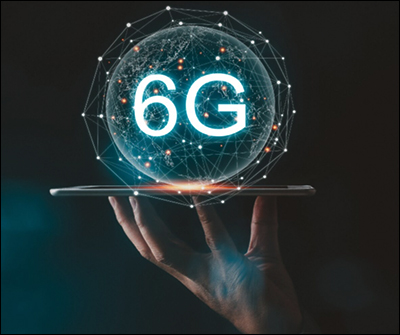 Wiliot has announced that it will present a session titled “6G Ambient IoT Opportunity: Antidote to Supply Chain & Climate Crises?” at this year’s Mobile World Congress Barcelona event, to be held on Mar. 1, 2023. Much about 6G has yet to be decided, Wiliot notes, but it has been generally agreed that ambient Internet of Things technologies will be part of it. The company will provide perspectives on the fundamentals of the technology, as well as the market and revenue opportunities for 6G and ambient IoT.
Wiliot has announced that it will present a session titled “6G Ambient IoT Opportunity: Antidote to Supply Chain & Climate Crises?” at this year’s Mobile World Congress Barcelona event, to be held on Mar. 1, 2023. Much about 6G has yet to be decided, Wiliot notes, but it has been generally agreed that ambient Internet of Things technologies will be part of it. The company will provide perspectives on the fundamentals of the technology, as well as the market and revenue opportunities for 6G and ambient IoT.
The session will offer early and encouraging findings from some of the first ambient IoT deployments, along with recommendations on how a company can set up for future success. The speakers—ABI Research‘s Dominique Bonte, as well as Wiliot’s Steve Statler and Amichai Sanderovich—will discuss the connection between 6G and ambient IoT, market size and use cases, where ambient IoT technology currently stands, strategies for deploying ambient IoT and the path to becoming carbon-neutral.

